Here is a common question – what was the first motorcycle made? Although it would seem like there is a clear answer, there really isn’t. One of the reasons for lack of clarity is because people have different ideas of what constitutes a motorcycle. In addition, when you toss in the variable of if the motorcycles were made inside or outside of the US and there are a number of possible “firsts.”
Next, now most everyone agrees that motorcycle must ride on two wheels. Also most everyone agrees it needs to have some type of a mechanical propulsion system. But, that brings into play does the question of whether the power needs to come from an internal combustion system? Another question is do other types of propulsion systems count as a motorcycle (for instance steam engines)?
Well ten or more years ago there were different arguments. For instance, a lot of people for a vehicle define as a “true” motorcycle an internal combustion system was necessary. And for others a steam engine is satisfactory. Now with electrical motorcycles (no matter what you think of them) having become more popular some opinions this might change what some people think of what was the first motorcycle.
Most Popular Three 1st Motorcycles
Next without taking sides, here are some of the “first” possible motorcycles. In the 1860s in Pierre-Michaux began making bicycles with pedals called velocipede. Then in 1867 his son Ernest put a steam engine onto a velocipede. So this might be the first “motorcycle” in the world for some people.
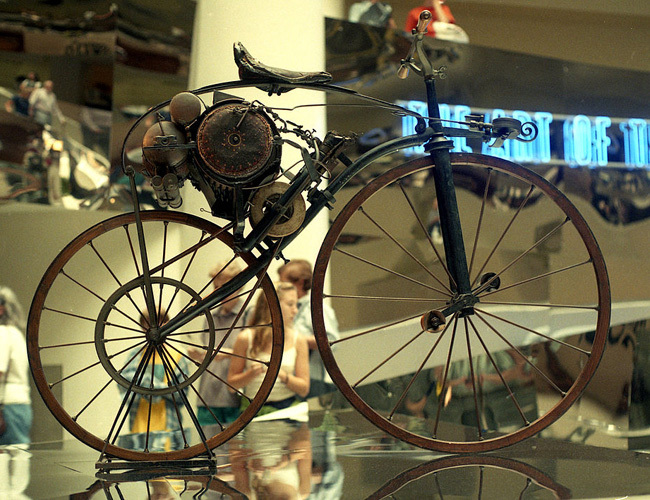
Pierre-Michaux Motorcycle
Then in 1868 the Sylvester Roper made a velocipede with a twin-cylinder steam engine in Massachusetts. Unfortunately, his development of velocipedes with a propulsion system ended in 1896 when died demonstrating one of his bikes. So this might be thought of as the first “motorcycle” made in the US.
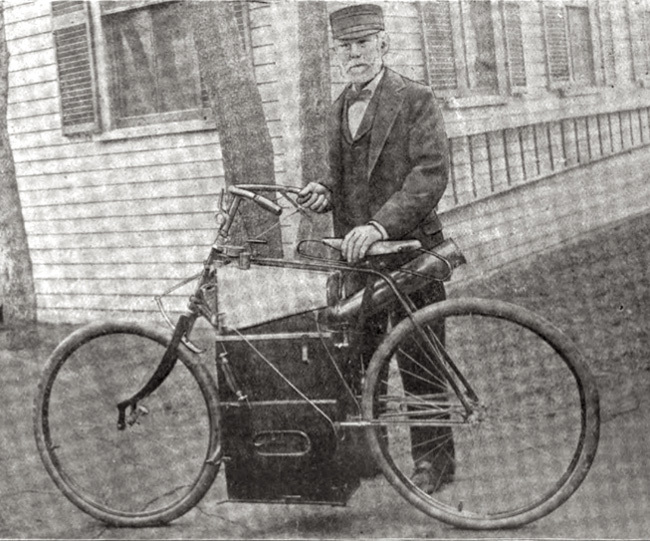
Sylvester Roper and His Velocipede
Noteworthy, in England in 1884 Edward Butler came out with the Butler Petrol Cycle. Now it did have three wheels, so it really wasn’t a motorcycle, but a trike. That being said, it was something different than the traditional vehicle with four wheels. And most importantly, it did have petroleum propulsion system.
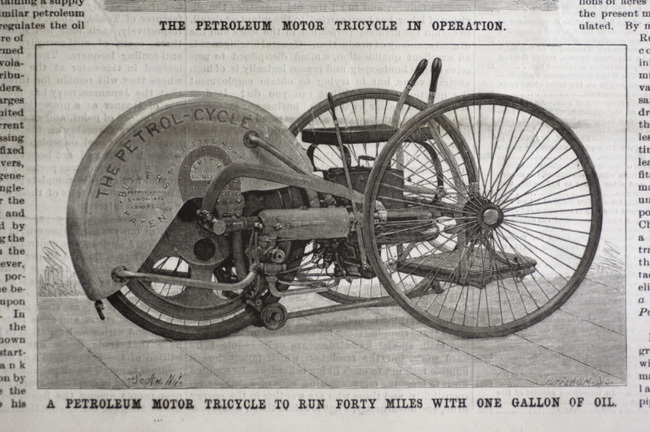
Butler Petrol Cycle
Then in 1885 in Germany the Reitwagen was made by Gottlieb Daimler and Wilhelm Maybach. And it did have internal combustion engine. But it also had both two large wheels and two small outrigger wheels. Subsequently, there is an argument that it was a four wheel vehicle. But because the Reitwagen could operate without the outriggers, motorcycle historians consider this the third potential “first” motorcycle (the other two being Pierre-Michaux and Roper).
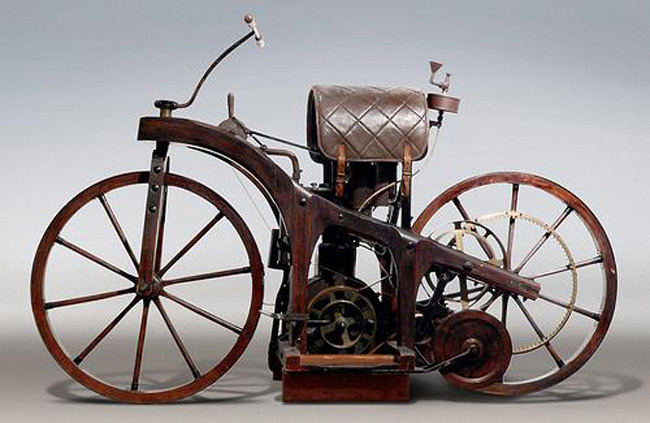
Daimler Maybach Reitwagen Motorcycle
Other Important Early Motorcycles
Now another noteworthy first was the 1894 Hildebrand & Wolfmuller from Germany. They made a number of vehicles and they were the first to be called a “motorcycle.” Next, their motorcycle was a little closer to what everyone agrees constitutes as a “motorcycle” – two-wheels and an internal combustion engine. Yes, the engine was in a different place than it is today. And also there wasn’t a back bone, so it kind of looks like a 1970s moped. But another big difference from it and the Michaux and Roper is that it did not have pedals.
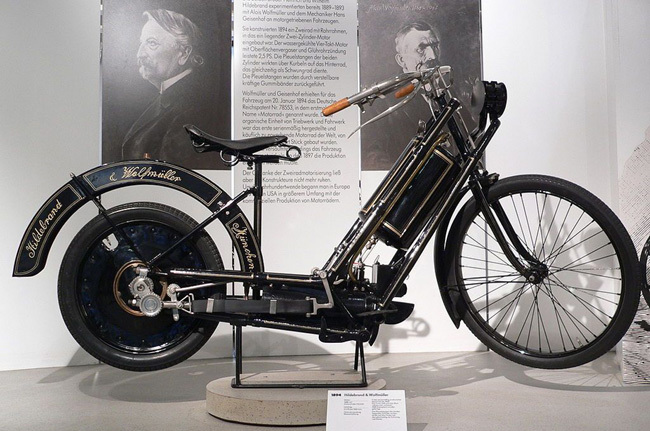
Hildebrand & Wolfmuller Motorcycle
Next, in 1898 the Orient-Aster motorcycles were made by Charles Metz in Massachusetts. And these were the first production motorcycles in the United States. Unfortunately they went out of business. But this was the “first” motorcycle in the production in the US.
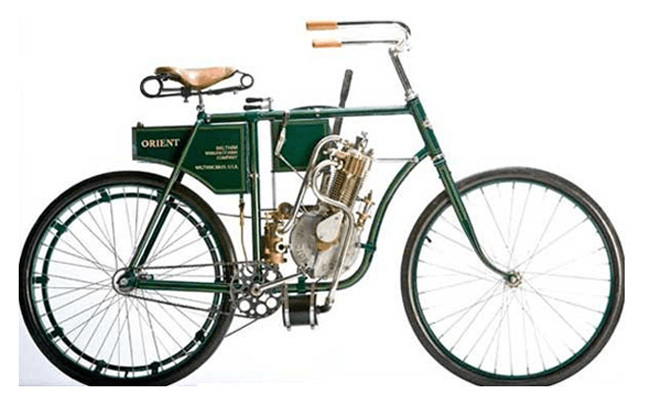
Oriental Aster Motorcycle
Then in 1898, Peugeot Motorcycles made their first motorcycle. Although today the company focuses on scooters, for some motorcycle historians Peugeot holds the title of the oldest motorcycle manufacturer in the world.
With all of the above, no matter what variables you believe constitute a motorcycle, these are the majority of the possibilities of the “first” motorcycles. Please share this on your social media sites and let us know what you think.
Finally, please share to your social media or site. Then let us know what you think of this article.
